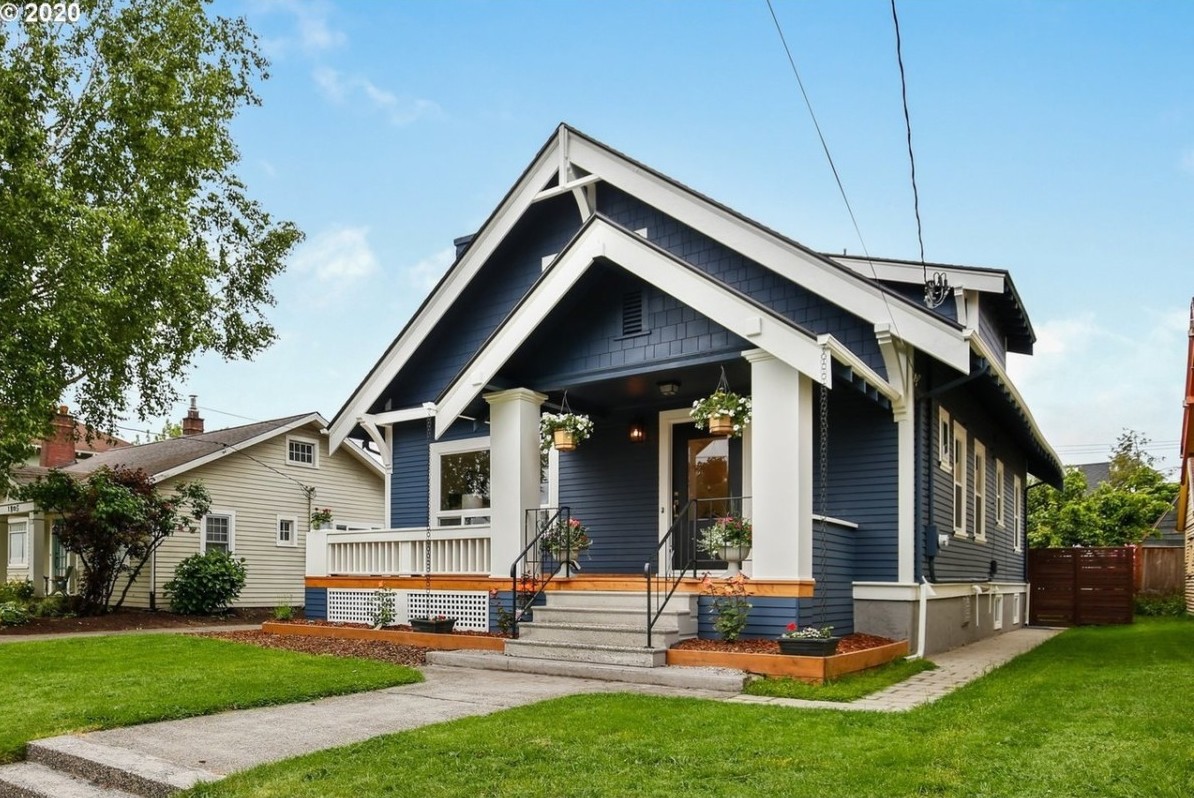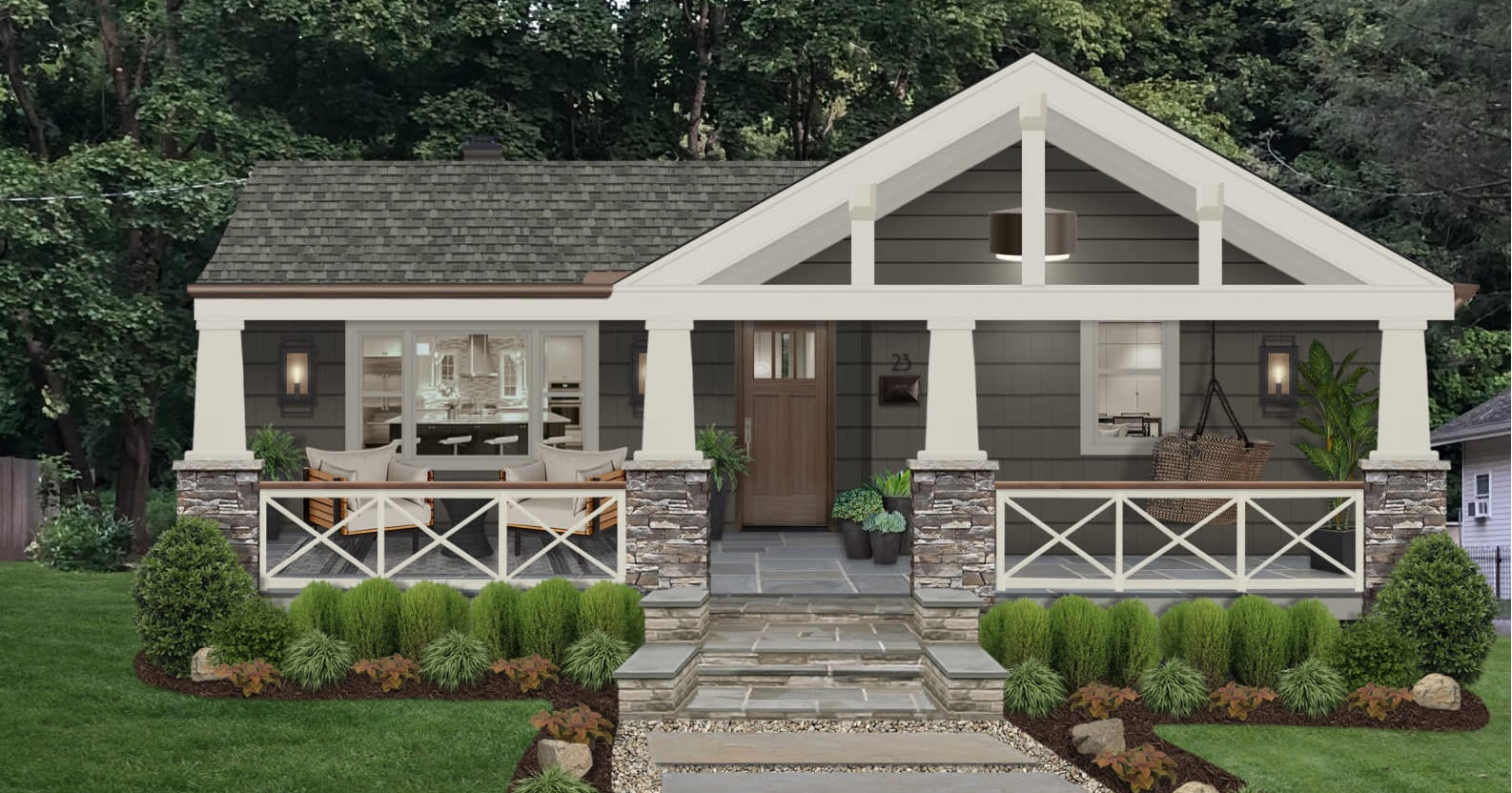Why a craftsman style house Remains Popular
Wiki Article
The Role of Arts & & Crafts Architects in Elevating Architectural Solutions in Residential Style
Arts and Crafts architects considerably affect household layout via their dedication to workmanship and sustainability. They prioritize handcrafted details and natural materials, which enhance both aesthetic appeals and neighborhood identification. By including clients in the style process, these architects produce unique living spaces that resonate with individual tastes. This method increases questions concerning the future trajectory of household architecture and its prospective effect on community dynamics. craftsman style house. What exists ahead for this timeless layout ideology?
The Principles of Arts and Crafts Architecture
The essence of Arts and Crafts architecture hinges on its dedication to workmanship and simpleness. This architectural motion arised in the late 19th century as a feedback to industrialization, emphasizing the value of handcrafted details and natural materials. The principles of Arts and Crafts architecture prioritize performance and consistency with the setting. Frameworks typically feature low-pitched roofs, broad eaves, and subjected rafters, promoting a sense of unity with nature.Artisans played a significant role in this style, frequently incorporating attractive components like tarnished glass, floor tiles, and woodwork, which mirror regional craftsmanship. The color palette tends to be natural and restrained, permitting structures to mix effortlessly right into their surroundings. On top of that, the design urges open layout and common spaces, fostering a feeling of togetherness. Generally, the principles of Arts and Crafts architecture celebrate the charm of simplicity and the value of human link to both nature and area.

Sustainable Practices in Residential Layout
While the need for eco accountable living proceeds to expand, sustainable methods in property layout have gotten substantial grip amongst architects and homeowners alike. Architects are progressively including energy-efficient modern technologies and lasting products right into their designs, aiming to decrease carbon footprints and enhance energy preservation. Approaches such as easy solar layout, eco-friendly roofings, and rainwater harvesting systems are becoming basic components of modern-day household architecture.Moreover, the selection of locally sourced products reduces transport discharges and supports local economic climates. Focus on natural light and air flow not only enhances indoor air high quality but likewise decreases dependence on synthetic lights and climate control systems. These lasting practices show a dedication to protecting the setting while offering home owners with comfortable, reliable home. As recognition of environmental problems expands, the integration of sustainability in property layout is poised to end up being a specifying quality of modern architecture, guided by the principles developed by Arts and Crafts architects.
Personalization and Personalization in Home Design
Modification and personalization in home design have actually emerged as essential fads in response to the growing need for unique living atmospheres that show specific tastes and lifestyles. House owners significantly look for to tailor spaces that resonate with their individual identifications, causing an extra meaningful connection with their space. craftsman style house. This motion motivates architects to involve customers in the layout procedure, cultivating collaboration that guarantees the final outcome personifies the homeowner's visionElements such as bespoke layouts, custom materials, and tailored finishes permit a diverse variety of expressions Get the facts in residential design. he has a good point Arts and Crafts architects play a pivotal role in this evolution, stressing craftsmanship and top quality. Their emphasis on incorporating creative aspects with capability warranties that each home is not just visually pleasing but also uniquely matched to the citizens' demands. Subsequently, this focus on personalization enhances the overall household experience, developing areas that are both personal and long-lasting.

The Influence of Arts and Crafts Architects on Area Visual Appeals
As communities develop, the influence of Arts and Crafts architects significantly shapes their aesthetic landscape. By emphasizing handmade information, all-natural products, and typical building and construction strategies, these architects develop homes that reverberate with their environments. Their styles typically integrate regional flora, textures, and shades, cultivating a feeling of consistency in between developed atmospheres and nature.The Arts and Crafts activity advertises community identity via building continuity. By urging house owners to adopt similar layout principles, areas develop a natural personality that boosts visual charm. This architectural harmony not only improves the aesthetic experience yet additionally instills a feeling of satisfaction amongst citizens.
Furthermore, the concentrate on sustainability and craftsmanship in Arts and Crafts architecture aligns with modern values, making these styles relevant in modern settings. Inevitably, Arts and Crafts architects contribute considerably to the general elegance and cultural honesty of neighborhoods, leaving a lasting effect on their visual tradition.

Future Trends in Arts and Crafts Architecture
With a boosting focus on sustainability and personalization, future patterns in Arts and Crafts architecture are positioned to mix traditional craftsmanship with modern-day innovation - craftsman style house. Architects are likely to prioritize eco-friendly materials, using recovered timber and all-natural rock to enhance the sustainability of domestic styles. The assimilation of clever home technology will become widespread, permitting for individualized living experiences Going Here without compromising aesthetic integrityFurthermore, the revival of artisanal methods will promote a renewed recognition for handmade aspects, such as bespoke kitchen cabinetry and personalized floor tile job. Future designs may additionally mirror a focus on community-oriented areas, motivating communication and connection among locals. Outside living areas will certainly gain prestige, seamlessly incorporating nature into the home environment. As Arts and Crafts architecture evolves, it will certainly remain to recognize its roots while adjusting to modern requirements, creating harmonious rooms that show individual values and way of livings.
Often Asked Questions
What Inspired the Arts and Crafts Activity in Architecture?
The Arts and Crafts motion in architecture was inspired by a response versus industrialization, stressing handmade quality, all-natural materials, and a return to typical craftsmanship, aiming to develop harmonious, useful spaces that commemorated creativity and individuality.Just how Do Arts and Crafts Architects Collaborate With Clients?
Arts and crafts architects team up with clients through open discussion, prioritizing individual needs and aesthetics. They stress craftsmanship and sustainability, cultivating a partnership that integrates the customer's vision with the designer's knowledge in layout and materials.What Products Are Typically Made Use Of in Arts and Crafts Homes?
Typical products in Arts and Crafts homes include all-natural wood, rock, and block, emphasizing workmanship and organic aesthetic appeals. These elements produce a cozy, inviting environment, mirroring the movement's commitment to top quality and simplicity in style.Just how Do Arts and Crafts Designs Improve Indoor Living Rooms?
Arts and Crafts designs improve interior home by promoting natural light, open layout, and handcrafted information. These components promote a cozy, welcoming atmosphere, encouraging a link in between homeowners and their environments with thoughtful, useful aesthetics.What Are Some Famous Examples of Arts and Crafts Architecture?
Famous instances of Arts and Crafts architecture include the Gamble House, Greene and Greene's masterpiece in The golden state, and the Robie Residence by Frank Lloyd Wright. These frameworks display handcrafted details and harmony with nature, defining the movement's essence.Report this wiki page